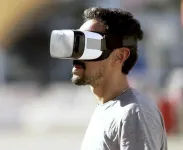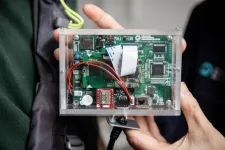(Press-News.org) Many people find it morally impermissible to put kidneys, children, or doctorates on the free market. But what makes a market transaction morally repugnant in the eyes of the public? And which transactions trigger the strongest collective disapproval? Researchers from the Max Planck Institute for Human Development and the Robert Koch Institute have addressed these questions. Their findings, published in Cognition, offer new entry points for policy interventions.
Would you be willing to sell a kidney or be paid to spend time on a date? If not, then you are not alone. Many people find the idea of selling and buying human organs, children, sex, or doctorates morally repugnant. But what are the psychological mechanisms behind these feelings? Which aspects of a transaction do people find most repugnant? A research team from the Max Planck Institute for Human Development and the Robert Koch Institute has investigated these questions.
"Our aim was to uncover the psychological drivers of people's feelings of repugnance towards such transactions," says Christina Leuker, lead author and researcher at the Robert Koch Institute, and associate research scientist in the Center for Adaptive Rationality at the Max Planck Institute for Human Development. "Once we know what makes a market transaction morally repugnant in the eyes of the public, we are in a better position to predict how people might respond to novel transactions, such as those arising from technological advances in the field of human genetic engineering."
To shine a light on the psychology of repugnance, the researchers conducted two online surveys, in which a total of 1,554 respondents judged 51 market transactions in terms of their repugnance and 21 other characteristics. These included the extent to which the transaction triggers anger or disgust, is harmful to society, affects the dignity of the seller, or leaves people open to exploitation.
The researchers found similar patterns of repugnance judgments across the respondents in both studies. Three transactions--selling rights to hunt endangered animals, selling brides, and selling voting rights--triggered the strongest collective disapproval. Moreover, the authors were able to identify five aspects that appear to underlie feelings of repugnance. One was moral outrage: The more moral outrage a transaction triggers, the more disgust and anger people feel, the less empathy they have for those engaged in the transaction, and the more harmful they think the transaction is to society.
The four other drivers of repugnance identified by the research team were the extent to which people want a transaction to be regulated; the extent to which a transaction's worth can or cannot be translated into a monetary value; the extent to which the transaction may exploit disadvantaged individuals; and the extent to which sellers are exposed to unknown risks or are unable to fully anticipate the consequences of the transaction.
Analyses showed that the degree of moral outrage was also a good predictor of the desire for regulation: Many transactions that triggered strong moral outrage were also characterized by a strong perceived need for regulation.
The researchers highlight that their approach can provide new entry points for policy interventions. "Transactions that prompt similar degrees of public repugnance may do so for very different reasons--and this has implications for policy interventions," says Ralph Hertwig, Director of the Center for Adaptive Rationality at the Max Planck Institute for Human Development. "For instance, if the main driver of repugnance toward a transaction is that it leaves disadvantaged individuals open to exploitation, an effective policy response may be geared toward protecting those who are vulnerable. If unknown risk is the main cause of repugnance, the policy may instead focus on reducing and clearly communicating potential risks."
The researchers also identified mismatches between the judged repugnance of a transaction and its current legal status. "For instance, UK respondents considered carbon emissions trading and selling permits to shoot rare animals highly repugnant, yet both are legal in their country," says Christina Leuker. "Such mismatches may be grounds for policy makers to reevaluate those transactions."
INFORMATION:
Original Publication
Leuker, C., Samartzidis, L., & Hertwig, R. (2021). What makes a market transaction morally repugnant? Cognition, 212, Article 104644. https://doi.org/10.1016/j.cognition.2021.104644
The Max Planck Institute for Human Development in Berlin was founded in 1963. It is an interdisciplinary research institution dedicated to the study of human development and education. The Institute belongs to the Max Planck Society for the Advancement of Science, one of the leading organizations for basic research in Europe.
Nuclear fusion offers the potential for a safe, clean and abundant energy source.
This process, which also occurs in the sun, involves plasmas, fluids composed of charged particles, being heated to extremely high temperatures so that the atoms fuse together, releasing abundant energy.
One challenge to performing this reaction on Earth is the dynamic nature of plasmas, which must be controlled to reach the required temperatures that allow fusion to happen. Now researchers at the University of Washington have developed a method that harnesses advances in the computer gaming industry: It uses a gaming graphics card, or GPU, to run the control system for their prototype fusion reactor.
The team published ...
As any juror will tell you, piecing together a crime from a series of documents tendered in a courtroom is no easy feat, especially when a person's future hangs in the balance.
Delivering the correct verdict on car accident and murder cases is contingent on good spatial awareness, but short of being at the scene of the crime, the room for error is large.
However, thanks to the advent of virtual reality (VR), jurors now have a better chance of making the right decision.
A new study published by the University of South Australia provides overwhelming evidence ...
The discovery of a Roman road submerged in the Venice Lagoon is reported in Scientific Reports this week. The findings suggest that extensive settlements may have been present in the Venice Lagoon centuries before the founding of Venice began in the fifth century.
During the Roman era, large areas of the Venice Lagoon which are now submerged were accessible by land. Roman artefacts have been found in lagoon islands and waterways, but the extent of human occupation of the lagoon during Roman times has been unclear.
Mapping the lagoon floor using sonar, Fantina Madricardo and colleagues discovered 12 archaeological structures aligned in a northeasterly direction for 1,140 metres, in an area of the lagoon ...
Newly-hatched pterosaurs may have been able to fly but their flying abilities may have been different from adult pterosaurs, according to a study published in Scientific Reports.
Pterosaurs were a group of flying reptiles that lived during the Triassic, Jurassic and Cretaceous Periods (228 to 66 million years ago). Due to the rarity of fossilised pterosaur eggs and embryos, and difficulties distinguishing between hatchlings and small adults, it has been unclear whether newly-hatched pterosaurs were able to fly.
Darren Naish and colleagues modelled hatchling flying abilities using previously obtained wing measurements from four established hatchling and embryo fossils from two pterosaur species, ...
Gene therapy in mouse models showed promise in preventing vision loss or blindness from serious retinal injury including optic nerve damage, and from retinal disease including diabetic retinopathy and glaucoma, Mount Sinai researchers report. Their study, published in the July 22 online publication of Cell, could transform treatment for those at risk of major vision loss from retinal degenerative diseases, which currently have no cure.
The researchers focused on retinal ganglion cells, which process visual information by sending images to the brain. These cells can degenerate as a result of retinal injury and retinal disease. ...
Geneticists from Trinity College Dublin have discovered how a specific genetic mutation called H3K27M causes a devastating, incurable childhood cancer, known as diffuse midline glioma (DMG), and - in lab studies working with model cell types - successfully reverse its effects to slow cancer cell growth with a targeted drug.
Their landmark work - just published in leading international journal, Nature Genetics and supported by Worldwide Cancer Research and The Brain Tumour Charity - translates crucial new understanding of the genetics of DMG progression into ...
A form of gene therapy protects optic nerve cells and preserves vision in mouse models of glaucoma, according to research supported by NIH's National Eye Institute. The findings suggest a way forward for developing neuroprotective therapies for glaucoma, a leading cause of visual impairment and blindness. The report was published in Cell.
Glaucoma results from irreversible neurodegeneration of the optic nerve, the bundle of axons from retinal ganglion cells that transmits signals from the eye to the brain to produce vision. Available therapies slow vision loss by lowering elevated eye pressure, however some glaucoma progresses to blindness despite normal eye pressure. Neuroprotective therapies would be a leap forward, meeting ...
Advances in microscopy have enabled researchers to picture loops of DNA strands for the first time. The images reveal how the human genome organises itself in three-dimensional space at much higher resolution than previously possible.
The findings, published in a new study in the journal Molecular Cell, also reveal that the process of DNA being copied into RNA - transcription - indirectly shapes the architecture of the genome. An international team led by Pia Cosma at the Centre for Genomic Regulation (CRG) in Barcelona and Melike Lakadamyali at the Perelman ...
Manipulating RNA can allow plants to yield dramatically more crops, as well as increasing drought tolerance, announced a group of scientists from the University of Chicago, Peking University and Guizhou University.
In initial tests, adding a gene encoding for a protein called FTO to both rice and potato plants increased their yield by 50% in field tests. The plants grew significantly larger, produced longer root systems and were better able to tolerate drought stress. Analysis also showed that the plants had increased their rate of photosynthesis.
"The change really is dramatic," said University of Chicago Prof. Chuan He, who together with Prof. Guifang Jia at Peking University, led ...
A new study showed that a wearable computer vision device can reduce collisions for both people who are blind or those who are visually impaired and using a long cane and/or guide dog by 37 percent, compared to using other mobility aids alone.
People who have visual impairments are at a significantly higher risk for collisions and falls. Commonly used mobility aids like long canes and guide dogs can offer benefits, but come with limitations in effectiveness and costs, respectively. While some electronic devices are marketed direct-to-consumer claiming to warn wearers of surrounding objects, there has been little evidence of their effectiveness in actual daily mobility settings. This is one of the first randomized-controlled trials to look at the potential benefit of the ...


